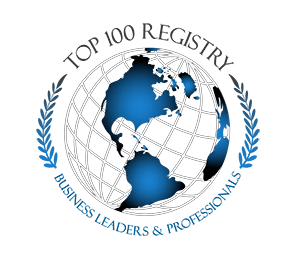Posterior Cervical Foraminotomy Newport Beach, CA
Robert Louis, MD specializes in Posterior Cervical Foraminotomy in Orange County
Robert Louis, MD, your Orange County Spine Surgeon, specializes in Posterior Cervical Foraminotomy is performed to decompress the spine for patients with a moderate cervical disc herniation or foraminal stenosis occurring at one or two levels of the spine. The procedure removes large, arthritic osteophytes or bone spurs and portion of the herniated discs that are compressing the spinal nerves.
Posterior Cervical Foraminotomy Surgical Technique
Using innovative technology, Posterior Cervical Foraminotomy is performed under general anesthesia and usually lasts approximately 2 hours, depending on the number of spinal levels involved. This non-invasive surgical microscopic technique uses one to two centimeter poke-hole incision with minimal tissue dissection and a faster recovery. Special instruments are used to carefully divide the fascia and muscle and remove the arthritic, bone spurs and ligamentum flavum. Nerve roots are protected and carefully retracted, so that the bone spurs can be clearly seen and partial laminectomy (removal of lamina portion of bone) and foraminotomy (removal of bone spurs near where the nerve comes through the hole of the spine bone) can be performed. Dr. Louis checks to ensure no compressive spurs or disc fragments are remaining.
The incision, which leaves minimal scarring, is washed with antibiotics and requires no bandage. The deep fascial and subcutaneous layers are closed with few sutures and the skin is usually closed using surgical glue.
It is performed in less time and is less painful than traditional or open cervical spinal surgery.
Benefit of Posterior Cervical Fusion
- Spine stabilization
Reduction in pain
Reduction in continuing spine degeneration
Improves quality of life
Posterior Cervical Foraminotomy
Pre-Posterior Cervical Foraminotomy
Your physician will review your condition and explain all of your treatment options, including medications, physical therapy, and other surgeries such as removal of the diseased disc, fusion, etc. You will be required to fast the evening before surgery and you may need to stop taking some medications in advance of the procedure. These medications may include aspirin and nonsteroidal anti-inflammatory drugs, as well as blood thinners. Additionally, all nutritional supplements need to be stopped at least one month prior to surgery. Before your surgery you will meet with your neurosurgeon to review or discuss the procedure, the area of the cervical spine being operated on, and sign consent forms. Potential risks and benefits of the procedure are also discussed. You may be measured for a cervical collar or brace prior to surgery. Your neurosurgeon may also schedule you for a pre-surgical medical evaluation.
Fusion Procedure
PCF is a surgical procedure that fuses two or more cervical spine bones together along the sides of the bone using a posterior incision. Bone graft or bone graft substitute is placed along the sides the spine bones, which over time, fuses together. PCF may be performed with or without a posterior decompression (laminectomy) and/or instrumentation (use of metal screws or rods), which contributes to stability especially with multi-level fusions and increases success rate of fusion.
Post-Operative Care
Most patients are able to go home 3-5 days after surgery. Before patients go home, physical therapists and occupational therapists work with patients and instruct them on proper techniques of getting in and out of bed and walking independently. Patients are instructed to avoid excessive bending and twisting of the neck in the acute postoperative period (first 1-2 months). Patients can gradually begin to bend and twist their neck after 2-3 months after the fusion solidifies and the pain subsides. Patients are also instructed to avoid heavy lifting in the postoperative period (first 2-4 months).
- Brace– Most patients are required to wear a neck brace post-surgery to reduce the pain and stress on the neck area and help improve bone healing.
Wound Care– The wound area should remain covered with a gauze bandage secured in place with tape. The area should be kept clean and dry. The bandage should generally be changed every 1-2 days, especially after showering.
Showering/Bathing– Patients can shower immediately after surgery, but should keep the incision area covered and dry, avoiding the water from hitting the wound. Bandage should be changed every 2-3 days. Patients should wait about 2 weeks when the wound has healed before soaking in a tub.
Driving– Patients may resume driving about 2-3 weeks after the surgery when the pain has decreased and when the neck range-of-motion has improved. Patients should not drive while still taking pain medications. Patient must be accompanied when driving in case the pain is felt and they need help driving back home.
Return to Work and Sports– Patients may return to light work duties around 2-4 weeks after PCF procedure. Patients may return to moderate level of work and light sports activities about 3 months after the surgery, when the pain has subsided and the neck strength and mobility has stabilized with physical therapy. Patients who have undergone single-level cervical fusion may return to heavy work and sports activities once the surgical pain has subsided and the neck strength and mobility has stabilized after physical therapy. Patients who have undergone multi-level cervical fusion are recommended longer rest and advised to avoid high-impact sports and heavy work.
Doctor’s Visits and Follow-Up
Most patients are able to go home one to two days after the Posterior Cervical Foraminotomy. Physical therapists and occupational therapists work with patients and provide instructions on proper movements, such as walking independently or getting in and out of the bed. Dr. Louis usually instruct patients to avoid excessive bending, twisting and heavy lifting of the neck post-procedure, until after two to three weeks. Patients will return for a follow-up visit to see Dr. Louis after the procedure.
Is Posterior Cervical Foraminotomy Right for You?
For more information on Posterior Cervical Foraminotomy or to request an appointment with Dr. Louis, please call (949) 383-4185 or Contact Us.



